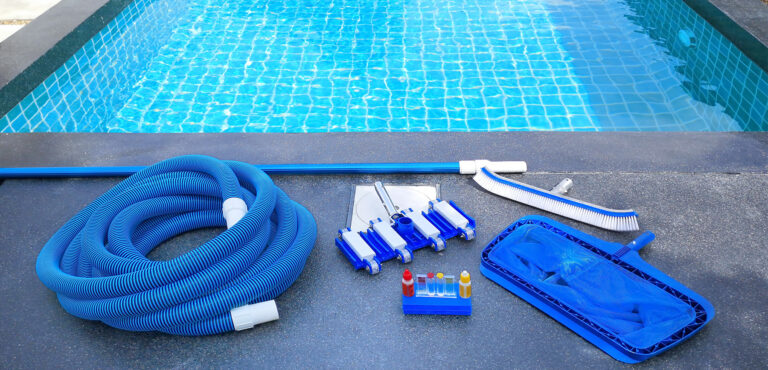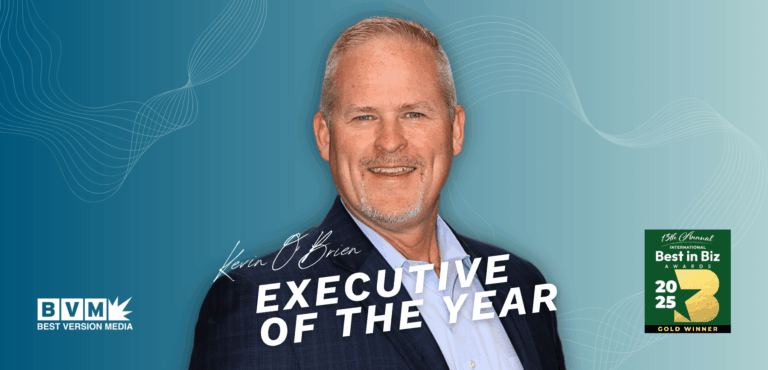From Scroll to Search: A Guide to High-Converting Creatives on Meta vs. Google
August 5, 2025
Industry Trends
Captivating ad creatives are imperative for businesses looking to convert clicks into customers. According to Google, 70% of a digital ad campaign’s success is determined by its creative. Whether your business is running digital ad campaigns on Google or Meta, ad creatives should aim to stand out while stopping the scroll.
While Meta platforms like Facebook and Instagram thrive on visual storytelling and emotional engagement, Google often serves as a place where consumers go for an answer, actively seeking products and solutions. That means ad creatives must be tailored to each platform in order to put your business in the best position to maximize conversions.
No matter if you are a startup launching your first campaign, or an already successful corporate giant, understanding exactly what drives engagement and conversions across both of these platforms remains a vital key to marketing success. Digital advertising can often be the first touchpoint potential consumers have with your brand, and it could be your only chance to separate yourself from the competition.
Here’s a closer look at the differences between high-performing ad creatives when it comes to Meta and Google, what works best for each platform, and how your business can implement an advertising strategy that will net positive results.
The Conversion Gap: Why Meta and Google Require Different Creatives
Meta and Google are two of the most frequently used online platforms, but they provide users with different environments. Meta is a visually-driven space where users typically consume content passively. Meanwhile, Google is more intent-driven, with users often searching for information, products or services.
When it comes to Meta, ads need to capture attention mid-scroll. The majority of the billions of monthly active users on Facebook and Instagram don’t visit the platform with the intention of making a purchase. Rather, they are there to connect, consume and be entertained. For an ad to stand out, the creative must interrupt that flow in a seamless, yet compelling way.
Advertising goals on Meta often entail building brand awareness and educating users on a product or service, part of the top-of-funnel stage in a marketing strategy. Meta creatives work well for businesses in numerous industries, particularly those that may rely on visual appeal like fashion, lifestyle or home decor.
With Google, ads simply need to meet the moment. Whether an ad displays in a search query, a YouTube video or a banner placement, the creative must relate to the user’s intent. The messaging on these ads should be clear, direct, informative and relevant to what the user is seeking.
Google Ads are frequently utilized by businesses that have products or services solving immediate needs, targeting purchase intent while moving users closer to a decision.
What Works on Meta: Creatives That Stop the Scroll
With most users not actively seeking out ads or intending to purchase on Meta platforms like Facebook and Instagram, appealing creatives that lead users to stop scrolling are the goal. Successful Meta creatives should include:
1. Thumb-stopping visuals
Ad creatives for Meta often consist of a headline, description, primary text and an image or video. Items like appealing, on-brand images, bright colors, expressive human faces that create reliability and emotional connection, motion graphics, testimonials and dynamic product demos can all help your ads win on Meta platforms. In particular, creatives that look organic and native to the platform, such as Reels, Stories or carousel posts, will likely perform better than overtly polished ads.
2. Hook, then value
A strong hook is required to grab attention. That can include a surprising statement, a bold visual or an emotional cue. From there, the value proposition should quickly be delivered, as the average user will likely decide within just a couple of seconds whether to keep looking or scroll past. A study from the Mobile Marketing Association notes that the human brain needs just 0.4 seconds to engage with an ad and form a positive or negative impression.
A prime example of a strong hook that grabs attention and promotes value within an ad creative would be:
“Struggling with sleep? Our weighted blankets are changing lives – see why 10,000+ customers are sleeping better every night.”
3. Mobile-first design
Mobile users dominate social platforms like Facebook and Instagram. Specifically, backlinko.com notes that 98.5% of Facebook user accounts access the platform via a mobile device. This means creatives should be made mobile-friendly with vertical orientation, large text and visual hierarchy matter. Creatives should be tested in mobile environments before their launch.
Businesses should be sure to test their overall campaign as well to find the most optimal and cost-effective results. Refreshing creatives every couple of weeks with new visual hooks or story-based messaging can be an effective way to explore what works best for your company, while also helping avoid ad fatigue.
What Works on Google: Creatives That Answer the Question
In contrast to Meta platforms, users often come to Google looking for specific information, and perhaps ready to make a purchasing decision on products or services at the bottom of the marketing funnel. With that in mind, businesses should aim to make ad creatives on Google accurate and informative through:
1. Headline and description precision
Google Ads succeed when mirroring user intent. Keywords should be naturally embedded within headlines and descriptions to align with queries, while dynamic keyword insertion can be used where appropriate. These ad creatives should also focus on benefits in addition to features, and include clear calls-to-action (CTAs), such as “get a free quote,” “call now” or “book today.”
An example of this kind of ad creative description would be:
“Affordable pet grooming near you – same-day appointments available!”
2. Visual trust in Display
Google Display and video networks favor visually appealing and trustworthy creatives. In contrast to Meta, polished, brand-safe content often performs better here. These creatives should feature brand logos, consistent color palettes and trust signals like certifications, reviews and awards. It is also beneficial to incorporate text overlays with offers or product features, particularly for banner ads.
3. Landing page continuity
The creative promise within Google Ads should always remain consistent with the landing page. As a result, businesses should avoid adding clickbait headlines or any kind of misinformation that doesn’t reflect the actual offer page or content.
With Google Ads, intent-driven, clear and relevant messaging is beneficial. With relatively limited space, keeping ads appealing, yet clutter-free and to the point, can help businesses drive engagement.
A Side-By-Side Comparison of Meta vs. Google Creatives
|
Element |
Meta |
|
|---|---|---|
|
User intent |
Passive browsing |
Active searching |
|
Creative format |
Video, image carousels, Stories, Reels |
Text ads, banner ads, video ads |
|
Tone |
Conversational, relatable |
Informational, authoritative |
|
Best hooks |
Emotions, problems, lifestyle visuals |
Solutions, offers, location-based clues |
|
Optimization focus |
Click-through-rate (CTR), engagement, video view time |
CTR, quality score, conversion rate |
|
Performance driver |
Attention-grabbing visuals |
Relevance to query, landing page match |
|
CTA style |
Soft: “Learn more,” “see why” |
Direct: “Get a quote,” “buy now” |
Strategies to Optimize Across Both Platforms
While both Google Ads and Meta Ads can provide different benefits to audiences and businesses alike, the optimal strategy for most companies usually entails utilizing both platforms. To make the most of each, marketers should adopt a dual creative strategy which is tailored to attention and intent. That can be done by:
1. Repurposing creatives strategically
Rather than using the same creative on both Meta and Google, businesses should be sure to adapt to the platform. This could entail:
- Turning Google banner ad copy into content captions for Meta
- Translating Meta Stories into structured Google responsive display ads
2. Test creatives separately
What works on one platform might not end up being the best fit on the other. Businesses should aim to run A/B tests that are tailored to each platform’s strengths. For Meta, this entails testing different hooks, creators and formats. On Google, businesses can test things like headlines, ad extensions and responsive assets.
3. Use platform-native tools
It’s important to measure results deriving from any digital ad campaign, and leveraging platform-native tools can help you create the most optimal strategy for your business. The ads creative breakdown in Meta Ads Reporting is a valuable tool for insights into what formats are working best for particular industries. Google tools like Performance Max asset reporting provide insights and guidance on best-performing ad combinations.
There are additional rules to keep in mind that should apply to any digital ad platform, including keeping consistent with your brand’s image and identity, and ensuring a seamless experience across all devices. No matter where they are being seen, quality ads should aim to address customer pain points and display benefits of a product or service through compelling language, captivating visuals and unique offers that cater to a customer’s needs.
Real-World Ad Creatives That Work
Many businesses have seen impressive results over the last several years thanks to strong ad campaigns featuring attention-grabbing creatives.
When it comes to Meta, jewelry retailer Pandora aimed to boost brand awareness in its German market by implementing video ads on Facebook. To do so, Pandora took one of its TV advertisements and cut it down to a 15-second in-stream video ad formatted for mobile users. The strategy led to a 61% lift in purchases and a 42% increase in new buyers.
Seltzer Goods, a North Carolina-based company that creates and sells home goods known for their art and design, partnered with Inflow while aiming to produce more sales from its Meta Ads campaigns. Optimizing for mobile users, Inflow created a pair of eye-catching creatives featuring puzzles available for purchase from Seltzer Goods. Combined with appealing ad copy, the campaign helped Seltzer Goods increase its return on ad spend, while also impacting organic traffic, as the firm saw a 183% increase in monthly organic traffic, and a 6.6% increase in organic conversion rate.
With Google, businesses like Skillshare, an American-based online learning community, have found success with more direct campaigns. One of Skillshare’s strategies is running time-sensitive deals that display benefits, such as promoting “50% off of an annual membership,” while noting the cost savings that consumers will be provided with. Paired with other direct CTAs like “start learning now,” Skillshare has seen success, particularly during a Black Friday campaign that helped CTRs increase by 63% compared to standard campaigns, and also resulted in a 15% rise in CTR on its mobile app.
Elsewhere, Peet’s Coffee, which originated in California several decades ago, found greater success with its Google Ads campaign after partnering with Single Grain. The partnership focused on changing ad copy while also placing an emphasis on keywords to further align with behaviors of consumers potentially seeking Peet’s. The results were significant, with a reduced 72% cost per order, and 676% more orders overall.
Ultimately, high-performing ad creatives like these should be built with intent, format and audience context in mind. Deriving positive results often goes beyond just advertising, but rather communicating in the language of each platform.
Best Version Media Can Help Your Business Thrive With Engaging Ad Creatives
Best Version Media can help your business enhance its advertising strategy through our management of digital ad campaigns on Google, Facebook and Instagram. By overseeing 13,000+ digital ad campaigns that create over 300 million monthly impressions, BVM has helped local businesses throughout North America increase their online presence.
BVM’s ad creatives will cater to your marketing strategy, whether that be targeting Meta users with visually appealing ads that stop the scroll, or attracting Google users with accurate and informative creatives featuring clear CTAs.
With multiple tiers of digital ad campaign bundles that can help boost your online presence, connect with BVM today to create a strategy that is right for your business.





